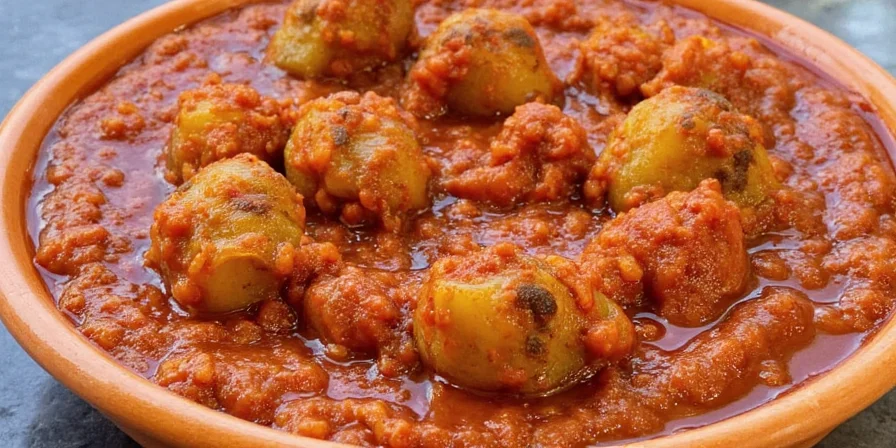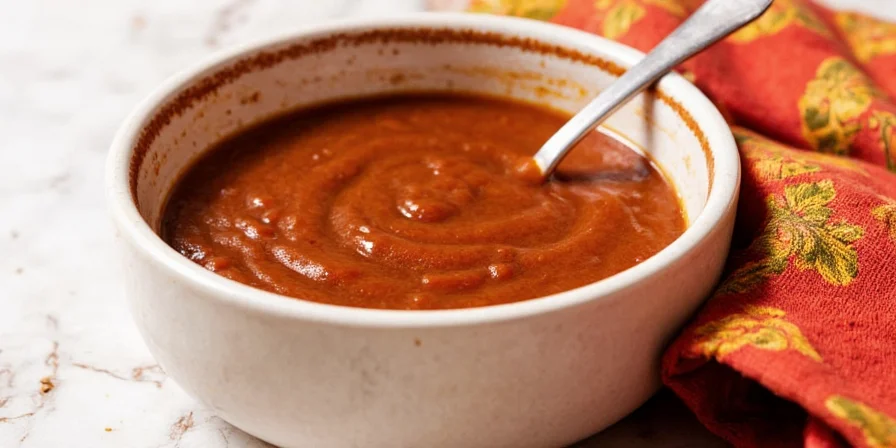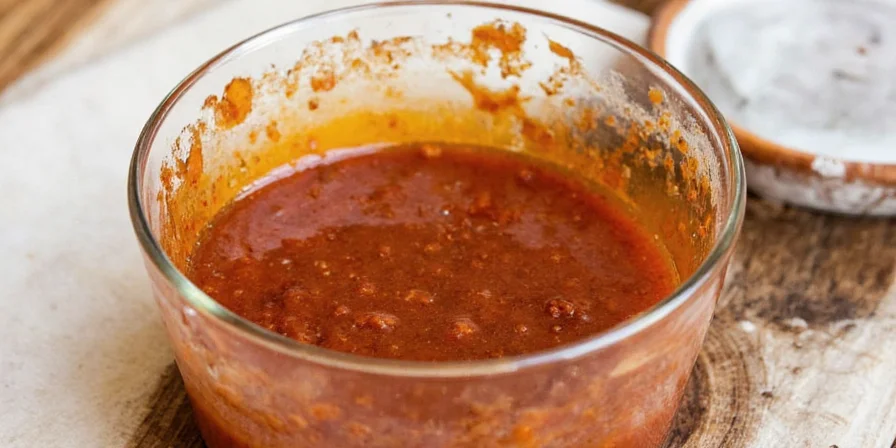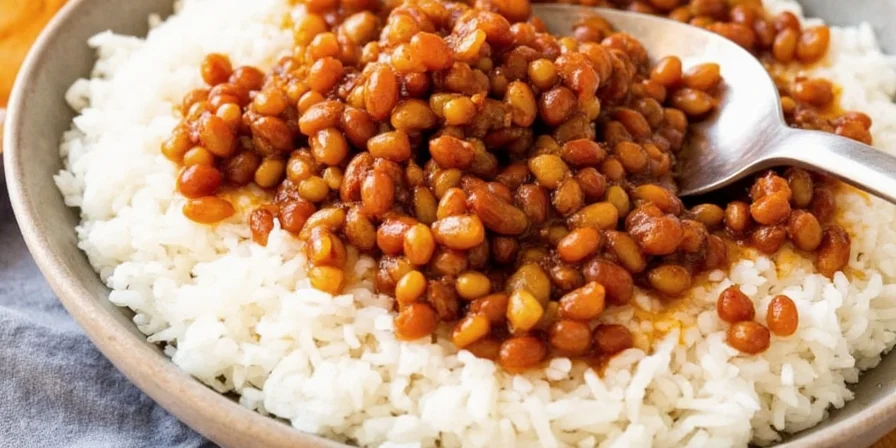Adobo Sauce: A Global Spice Adventure in Every Drop!
Introduction
If you’ve ever bitten into a dish that made your taste buds feel like they’re dancing at a Latin American fiesta or a Filipino street market, chances are, adobo sauce was involved. But here’s the kicker — this humble sauce is far more than just a marinade or condiment. It’s a culinary passport to global spice traditions, blending history, geography, and culture into every drop.
What Exactly Is Adobo Sauce?
Let’s get one thing straight — not all adobos are created equal. The term 'adobo' comes from the Spanish verb adobar, meaning 'to marinate' or 'to season'. But its modern interpretation varies wildly depending on where you go:
- In the Philippines, adobo refers more to a cooking method than a sauce — usually involving soy sauce, vinegar, and garlic.
- In Mexico, red adobo sauce (often chipotle in adobo) is smoky, tangy, and packed with dried chilies, tomatoes, vinegar, garlic, and spices.
- In the Caribbean, it might be a dry rub of garlic, oregano, salt, and pepper.

Why Adobo Sauce Belongs in Your Spice Cabinet
Here’s why you should care about adobo sauce beyond just flavor:
- Packaging Heritage: Each bottle of adobo sauce carries centuries of colonial history, migration, and cultural fusion.
- Flavor Bomb: It's the kind of sauce that adds depth without stealing the spotlight — think of it as the bassist of the flavor band.
- Versatility: From tacos to grilled chicken to vegan cauliflower, adobo can play nice with almost anything.
DIY Adobo Sauce: The Ultimate Flavor Hack
Store-bought adobo sauce is great, but making your own means full control over heat level, sweetness, and acidity. Here’s how to do it like a pro (and maybe impress your friends).
Ingredients You’ll Need
| Ingredient | Purpose |
|---|---|
| Dried ancho chiles | Sweet, fruity base with mild heat |
| Dried guajillo chiles | Bright, tart notes |
| Garlic cloves | Umami powerhouse |
| Cumin seeds | Earthy warmth |
| Oregano (Mexican preferred) | Herbal kick |
| Tomato paste | Richness and color |
| Apple cider vinegar | Tanginess and preservation |
| Water or broth | Adjust consistency |
| Oil | Depth and shine |
Step-by-Step Guide
- Rinse and Toast: Briefly rinse the dried chilies under warm water, then toast them gently in a dry pan until fragrant (don’t burn!).
- Rehydrate: Soak the chilies in hot water or broth for 20–30 minutes until soft.
- Blend: Drain the chilies and combine everything in a blender until smooth. Add water or oil as needed.
- Strain & Store: For a silky texture, strain through a fine mesh sieve. Store in an airtight jar in the fridge for up to 2 weeks, or freeze for later use.

Pro Tips for Using Adobo Sauce Like a Local
- Marinate meats overnight for maximum flavor penetration.
- Stir into soups or stews for an instant flavor boost.
- Brush onto veggies before roasting for a smoky twist.
- Use sparingly if using store-bought chipotle-in-adobo — it’s often spicier than it looks.
- Mix with mayo or sour cream to make killer sandwich spreads or dipping sauces.

Adobo Sauce Around the World: A Quick Tour
Let’s take a quick global tour of how different cultures have adopted and adapted adobo-style flavors:
| Region | Style | Key Ingredients |
|---|---|---|
| Mexico | Red adobo sauce | Ancho/guajillo chiles, vinegar, garlic, spices |
| Philippines | Adobo (as a dish) | Soy sauce, vinegar, garlic, bay leaf |
| Puerto Rico | Adobo Seasoning | Salt, garlic powder, oregano, cumin |
| Caribbean | Spice blend | Pepper, citrus zest, herbs |
| Southwest US | Smoky variations | Chipotle, smoked paprika, molasses |

The Science Behind the Heat: Why Adobo Tastes So Good
Here’s where we geek out a bit: what makes adobo sauce so irresistibly tasty isn’t magic — it’s chemistry.
- Acid Balance: Vinegar and tomato paste provide acidity that cuts through fatty meats and enhances other flavors.
- Maillard Reaction: Toasting chilies and spices develops deep, complex flavors through browning reactions.
- Umami Synergy: Garlic, onion, and tomato paste contain natural glutamates that create a savory depth when combined.
- Preservation: The acid and salt content naturally preserve the sauce, giving it a longer shelf life.

Common Mistakes to Avoid When Making Adobo Sauce
Even pros mess up sometimes. Here’s what not to do:
- Over-soaking chilies = bland flavor and soggy texture.
- Skipping the toasting step = missing out on that signature roasted depth.
- Using old spices = flat, lifeless sauce.
- Too much salt too soon = overpowering taste and risk of imbalance.
Conclusion
So there you have it — adobo sauce isn’t just a kitchen staple; it’s a liquid storybook filled with spice routes, cultural crossroads, and bold flavors. Whether you're making your own batch or jazzing up store-bought, remember: adobo sauce is less about rules and more about rhythm. It’s the secret groove that turns good food into unforgettable experiences.
Now go forth, grab those chilies, fire up the blender, and let adobo sauce become your next global spice adventure!











 浙公网安备
33010002000092号
浙公网安备
33010002000092号 浙B2-20120091-4
浙B2-20120091-4